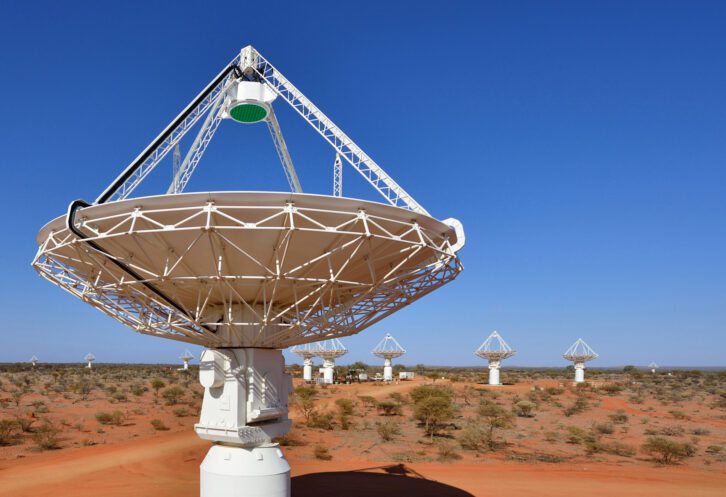How Digital Twin Technology Can Take You Sightseeing at CSIRO’s Australian Square Kilometre Array

The world of virtual reality has opened up a new element of visual delight, something that many of us are now used to taking advantage of. However, technology has now elevated this to yet another level– that of the digital twin.
This cutting edge tech has been embraced by the CSIRO, meaning that each of us can enjoy a breath-taking visit to the Australian Square Kilometre Array Pathfinder (ASKAP) radio telescope at the Murchison Radio-astronomy Observatory in Western Australia.
What is a Digital Twin?
In layman’s terms, a digital twin is a virtual replica of another object or system. For example, this could be of a building, of how a system works with all the associated integrated parts, a region, city or – in the case of ASKAP – the detailed view of the area and the heavens that’s gained by the advanced telescopes that make up this vast facility.
The digital twin utilises computer graphics, simulation, virtual reality, augmented reality, sensors, mobile mapping and modelling to allow virtual visitors to view both the Australian and celestial landscape. The result is an amazingly realistic and accurate replica of exactly what would be seen if you visited and were able to peer through the telescope in person.
How to Explore this Digital Twin Landscape
Being able to virtually view the area and what is seen through one of Australia’s largest and most powerful telescopes is an exciting upgrade to the ASKAP facility. Currently, users can head there though a simple smart phone app, via a head-mounted display or on a virtual reality system, such as EPICylinder. Future upgrades will see an online web platform added to the suite of viewing facilities.
Gazing at the heavens, either today or at a specified time in the future, is easy to achieve. For example, if you wanted to see how the sky will appear in 50 years’ time, you can simply set the time to the hour you require and the digital twin will display exactly how it’s expected to look at that moment, based on current scientific knowledge.
Future Tech Updates and the Advantages of Digital Twin Technology
Currently, the digital twin offers a demonstrator model of what the technology is capable of. This will soon advance, taking other aspects into account. This includes the impact of weather, temperature, visibility, humidity, wind speeds and radio signals. Other scientific data will be added as Universe observations and knowledge increases.
One of the greatest advantages of digital twin technology is the ability to interact with a system or object from anywhere in the world. In the case of ASKAP, the remote location in WA will no longer be a disadvantage for researchers and scientists that need to access the data. The tech will provide a vital additional element into the galaxies and celestial objects that ASKAP is studying.
Digital twin replicas offer a huge step forward in many areas, not just that of astronomy. The ability to simulate an exact copy of how a system works will reduce many expensive, complex and laborious tasks in multiple industries. Engineering, for example, is one place where the tech is already being embraced. It negates the need to build costly physical models to test for viability. Being able to tweak and prepare in the digital plane allows for dramatic cost reductions and increased accuracy.
The digital twin revolution might have only just begun – but watch this space. Future work in all industries will soon be embracing what is one of the greatest inventions we’ve seen in the recent history of technology.
Contact us to find out more about our range of products, or request a quote online.
If you find this post useful then check out “Robotics, the Space Race and the Digital Twin Link” and “Robotic Tech & UT Testing for Accuracy and Reduced Risk“
